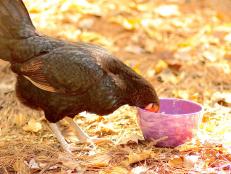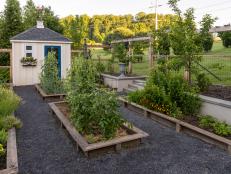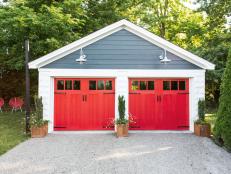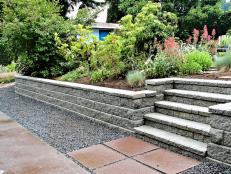Building a Better Chicken Run


Photo by Mick Telkamp
Some chickens live the good life. Spending their days roaming the range, foraging to their hearts’ content. But for many, if not most, backyard chicken enthusiasts, free-ranging the flock just isn’t practical. We're talking space limitations, HOA restrictions and the neighbor has a cranky dog restrictions. Keeping the backyard brood fenced in is often the right call. A fenced in space attached to the chicken coop is called a run and, with a little planning, provides the flock with all the outdoors it needs without the need to roam. For what it’s worth, even those free ranging chickens will (or at least should) end their day under confinement, much to the chagrin of the raccoons and opossums waiting to strike when the sun goes down.
Chicken runs are usually of basic construction, but a few requirements need to be met to ensure a flock of any size will remain happy, healthy and safe from those pesky predators. If you are building your dream coop or expanding to accommodate a growing flock, remember that your chickens will spend much of their lives alfresco. Take these tips into consideration when building your flock a run to call their own.
The size of a chicken run should be based, not surprisingly, on flock size. There is some flexibility. For example, a flock of bantams needs less room than heavier breeds. A good rule of thumb is to provide ten square feet of run space per chicken. So a 5’x6’ run will accommodate three chickens, 6’x10’ for six birds, etc. Chickens in an undersized run are likelier to fight and unsanitary conditions can lead to health problems. In the case of chicken runs, bigger is always better.
Good fencing is crucial. Although one might assume chicken wire is a good choice, it doesn’t take much for an aggressive predator to rip through the flimsy fencing. Chain link fence will keep out larger predators like dogs or foxes, but smaller aggressors like weasels will slip right through. Hardware cloth or small mesh welded-wire fencing is ideal, but any strong, small-mesh barrier will get the job done. Remember that some predators are known to dig under fences to reach their prey. Run fencing should be buried at least 6 inches below the ground.
Roofing may be solid or fashioned from additional fencing. Using inferior materials to cap the run may lead to heartbreak as predators ferret out weak spots in the coop. Corrugated panels can be used to create a fully covered roof. Industrial netting or the same fencing used for the walls may also be used. At least partial shade is recommended.
Install a sturdy access door. A screen door or recycled storm door can be used as an access door, but the simple push button latches may not stop raccoons from accessing the run. Consider adding a gate latch secured with a carabiner or even a padlock.
Ground cover within the coop can be anything from wood chips, straw and grass to bare ground. Organic materials tend to break down quickly and plain sand is a popular choice for its durability. Whatever you choose, make sure the chickens may easily scratch and dig. Scratching for bugs and worms and digging holes for dust baths are an important part of a chicken’s day. Free ranging not required.













































